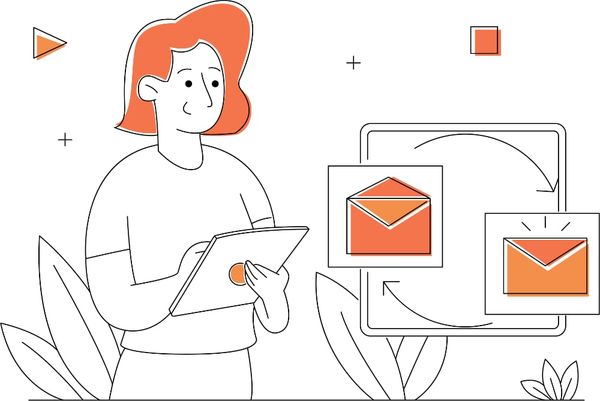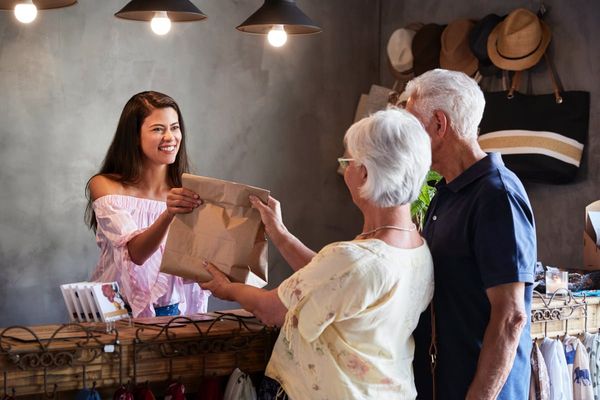
Introducing new pricing for Helpmonks
Discover Helpmonks' new pricing structure, featuring a flexible PRO plan, a FREE plan for smaller teams, and an exciting affiliate program. Experience unparalleled email management solutions today!
Read nowEmail is the oldest and most widely used form of digital communication. It's been around since the early days of computers and continues to be a primary means of business communication today. In fact, it's estimated that the number of daily email users will hit 4.6 billion by 2025. With this kind of popularity, it's no surprise that an email thread has become an essential tool for organizing complex conversations.
As a business person, your inbox is likely flooded with hundreds of emails on a daily basis. It can be challenging to manage this massive influx of information effectively. Organized conversation tracking is key to making sense of it all, and email threads are an excellent device to that end.
Here, we help you understand email threads and how to manage them effectively. By the end, you'll be equipped with the best practices to organize and keep your conversations on track.
An email thread refers to a cohesive sequence of emails exchanged between multiple individuals pertaining to a particular topic. By arranging messages chronologically, this communication format facilitates seamless and comprehensive tracking of conversations over time.
Each message in a thread links back to the original, creating an email "thread" that can be traced back and forth between participants. By doing so, it becomes simpler and less time-consuming for people to follow conversations without having to search through countless emails.
In an email thread, replies are visible to all participants, which makes it a great way to keep group conversations in order. As a sender, however, you can exclude someone from the thread by replying to only certain people. This allows you to keep sensitive information private while keeping group conversations organized.
Some email clients don't support email threads. If your recipient uses one of these clients, each message they send will appear as an individual email in your inbox.
Below are some of the key benefits of email threading:
Inbox clutter can be a real problem, particularly for those who receive large volumes of emails. When emails are sorted into threaded conversations, the inbox becomes easier to manage and navigate since all the replies related to a particular subject will be grouped together.
Email threading achieves this by automatically organizing related emails into conversations so that you can easily view the entire thread with a quick glance. This helps to keep your inbox tidy and organized, reducing the clutter that can be overwhelming to your email marketing campaign or customer inquiry.
One of the biggest benefits of email threads is that they help to keep all related emails together. This makes it easy to access and review all previous communication regarding a particular topic in one place without having to switch back and forth between different emails. Seeing the entire conversation history gives you a better understanding of the context for making decisions or responding appropriately.
Through email threading, all members of a conversation are always kept in the loop. This ensures that everyone is up-to-date on the conversation and reduces confusion. Even if someone replies to an email a few days later, they can still see the entire conversation thread and catch up with what has already been said.
Some of the drawbacks of email threading include:
If participants keep replying to an email thread, it can quickly become lengthy and difficult to parse. Copying the entire chain of emails into a single message can also lead to confusion, as people may be unsure of which parts are relevant at that particular time.
Another drawback of email threading is that not all email clients support it. This means some participants may not be able to view the thread correctly or have access to all its features, resulting in an incomplete understanding of the conversation.
When an email thread is forwarded to someone on the outside, it can expose confidential information. It's also possible for malicious actors to access the thread if it's not adequately secured. You must know when and how you send emails to ensure your threads remain secure and confidential.
At times, email threads can include out-of-context or irrelevant messages, causing confusion and unnecessary correspondence. When left unmanaged, this can impede productivity.
To avoid this issue, ensure that all participants in the thread know who should be included and who shouldn't. Furthermore, begin each email thread with a brief summary to ensure that everyone understands the conversation.

Now that you understand what an email thread is and its potential benefits and drawbacks, let's look at some best practices for managing them.
Before posting a thread, consider if it is the most effective way to communicate your message. If the topic is complicated and likely to involve multiple people weighing in, an email thread can be helpful.
However, if the message is simple or doesn't need input from others, consider responding directly instead of using a thread. This keeps the conversation focused and makes it easier for everyone to follow.
Threads can quickly become confusing if you don't label them appropriately. Make sure that each thread has a clear subject line, preferably with the topic or goal of the email thread spelled out in plain language. This allows new thread members to catch up quickly without reading all the messages.
To guide a thread effectively, framing the conversation's direction is crucial. This means setting expectations about when responses are due and any deadlines associated with the topic at hand.
It also helps streamline conversations by ensuring everyone understands what topics are being discussed and how decisions will be made.
When an email thread involves multiple people, there's always the risk that it can become stagnant if responses aren't given promptly. It is recommended to respond to a thread within a day or two of receiving the message. This keeps conversations from getting off track or becoming too derailed to continue.
It's good practice to re-evaluate your communication channels periodically. Email threads can be useful, but if people start feeling overwhelmed by them, it might be time to consider other options like instant messaging or video conferencing. Change is often challenging, but it can be the best thing for a team if it helps increase collaboration and productivity.
Threaded emails are essential to digital communication, and knowing how to manage them effectively is critical to successful collaboration between stakeholders. By following the best practices outlined here, you can ensure that your threaded conversations are productive and organized.
Having the best email management software, such as Helpmonks, can go a long way in helping you stay organized and efficient in managing your email threads. This software lets your team access all conversations in one place, set up automated reminders and follow-ups, and search for emails quickly. And it's seamless. Try it out today!

Discover Helpmonks' new pricing structure, featuring a flexible PRO plan, a FREE plan for smaller teams, and an exciting affiliate program. Experience unparalleled email management solutions today!
Read now
Dynamic email signatures increase brand visibility, build brand identity, and boost conversions. Learn how to create and update dynamic email signatures.
Read now
Looking for an email marketing automation software? This guide shows what to look for. We'll also review the best tools for your online marketing needs.
Read now
Using customer engagement solutions helps you keep your existing customer base and grow. Here are the top 10 customer engagement solutions for your business.
Read now
Empower your team and delight your customers.
